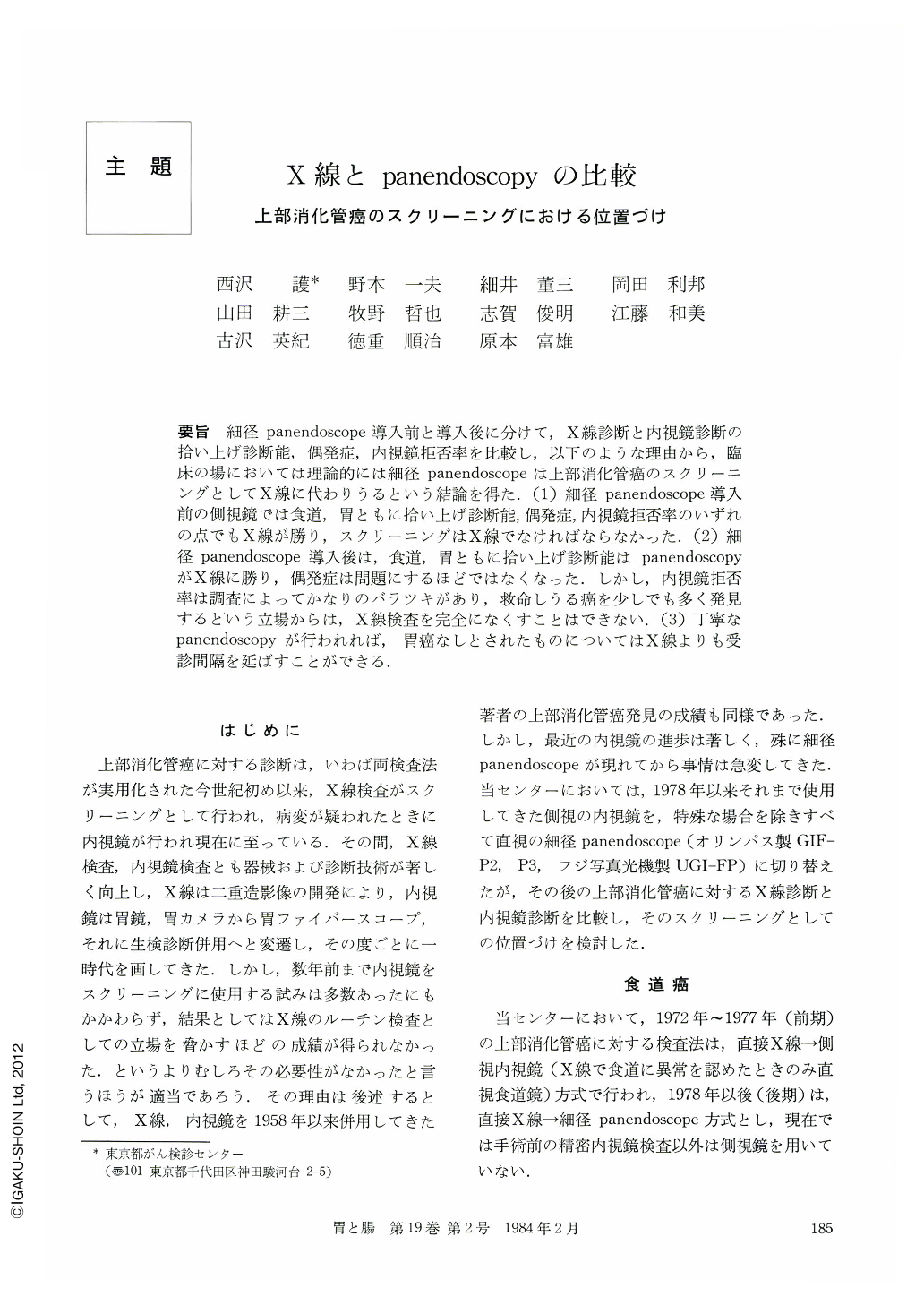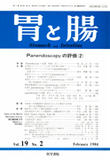Japanese
English
- 有料閲覧
- Abstract 文献概要
- 1ページ目 Look Inside
- サイト内被引用 Cited by
要旨 細径panendoscope導入前と導入後に分けて,X線診断と内視鏡診断の拾い上げ診断能,偶発症,内視鏡拒否率を比較し,以下のような理由から,臨床の場においては理論的には細径panendoscopeは上部消化管癌のスクリーニングとしてX線に代わりうるという結論を得た.(1)細径panendoscope導入前の側視鏡では食道,胃ともに拾い上げ診断能,偶発症,内視鏡拒否率のいずれの点でもX線が勝り,スクリーニングはX線でなければならなかった.(2)細径panendoscope導入後は,食道,胃ともに拾い上げ診断能はpanendoscopyがX線に勝り,偶発症は問題にするほどではなくなった.しかし,内視鏡拒否率は調査によってかなりのバラツキがあり,救命しうる癌を少しでも多く発見するという立場からは,X線検査を完全になくすことはできない.(3)丁寧なpanendoscopyが行われれば,胃癌なしとされたものについてはX線よりも受診間隔を延ばすことができる.
The efficacy of endoscopy and x-ray, the incidence rate in both cases, and acceptance rate of panendoscopy only, were contrasted, before and after the introduction of the panendoscope. Theoretically, the writer has come to the conclusion that the small-diameter panendoscope could replace x-ray. This is based on the amount of varied evidence available. However, for the follwing reasons, it is unlikely that panendoscopy will entirely replace x-ray in the foreseeable future.
(1) Before the introduction of the small-diameter panendoscope, observation of the stomach had largely been carried out through the use of a lateral-viewing instrument. However, this instrument was painful for the patient and did not come into widespread use. Therefore, in the past, for diagnostic checking, incidence rate and acceptance rate, x-ray had been employed more than endoscopy in the field of screening.
(2) After the introduction of small-diameter panendoscope, the situation pertaining entirely reversed, that is to say, endoscopy became more efficacious than x-ray. The incidcnce of emergency rate decreased so much as to be negligible. However, the acceptance rate of endoscopy fluctuated, depending on when questionnaires were sent to patients. Immediately after the examination, the acceptance rate was higher; one year later, just before the follow-up examination, the numbers dropped significantly. Therefore, the bringing about of a change in public attitude to endoscopy is of crucial importance. Furthermore, attitude will differ accoring to patient's background. From the viewpoint of detecting as many curable cancers as possible, public acceptance of endoscopy is urgently needed and the public must be informed as to its efficacy. According to our experience and study the rejection rate can be reduced to between 10 and 20%, but it will take much longer time to reduce this percentage.
(3) Theoretically, with panendoscopic examination the length of time between visits can be extended in the case of patients diagnosed as non-cancerous. This is not so with x-ray.

Copyright © 1984, Igaku-Shoin Ltd. All rights reserved.


